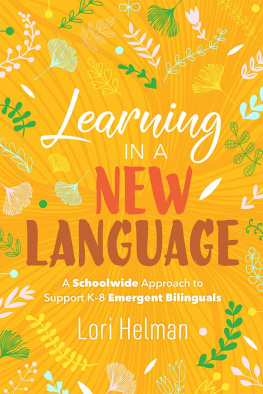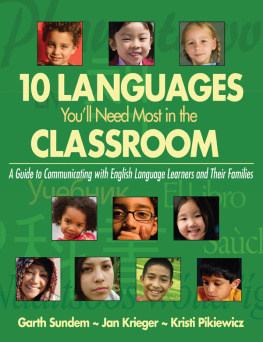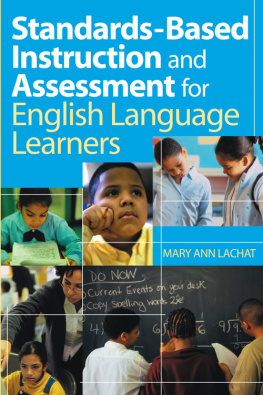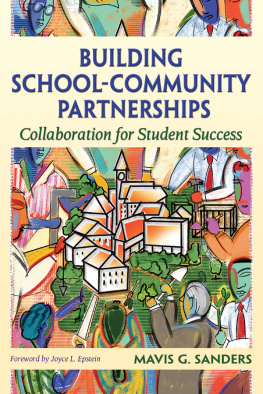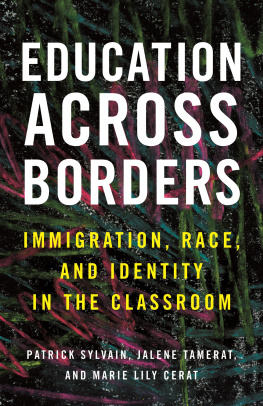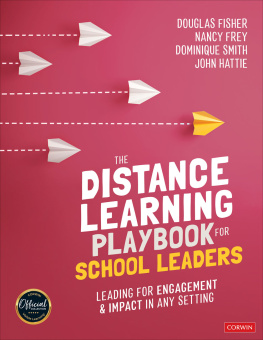Contents
Guide
Pages
Chapter 1
An Urgent Call to Action
....................
As an educational leader, you have many responsibilities entrusted to you by a range of stakeholdersthe families and communities you serve, your students, the school staff, your organization's board or governing body, policymakers, and the greater community. These responsibilities range from basic management and safety to ensuring that all of your students have opportunities to become well prepared for college, career, and civic engagement. As times change, the responsibilities of school leaders continue to increase, and more information and strategies are needed to cultivate the success of an increasingly diverse population of students. It is in this context that Learning in a New Language: A Schoolwide Approach to Support K8 Emergent Bilinguals has been written.
The book is designed to be a comprehensive and accessible resource for instructional leaders who work in multilingual communities with students who are acquiring English at school. The book brings together essential background information and evidence-based practical strategies into a one-stop reference for busy instructional leaders. The focus area of each chapter represents an aspect of educational reform that is often addressed in a full-length book. The purpose of this book, however, is to get to the heart of the topic quickly and present forthright solutions.
School leaders will vary in their background knowledge of the disciplinary content areas, the development of language and literacy, how to engage family members, cultural responsiveness, and schoolwide systems of support. This book is designed to provide foundational information in all these areas, with a focus on approaches that are effective for students learning in a new language and representing a variety of cultural communities. With the knowledge presented here, instructional leaders will be able to engage with educators and family members from a solid foundation of understanding. At the end of each chapter, online resources for further learning are shared to expand on the content.
This chapter serves as an introduction. To begin, it explores a few details about the cultural and linguistic diversity of students in K8 classrooms in the United States and why recent demographic shifts call upon educators to enlarge and enhance their educational approaches. Students from historically marginalized communitiesfor example, those who speak languages other than academic English, are immigrants, have fewer economic resources, are people of color, are differently abled, or represent gender diverse or sexual minority populationsface obstacles to receiving equitable treatment in schools and classrooms. For this reason, a vision for equity is the backbone connecting each chapter of the book and is introduced here in the first chapter. The chapter also provides information about the terminology used throughout the book and previews the content of each chapter.
Why This Book Is Needed
Approximately 10 percent of K8 public school students were identified as English language learners (ELLs) in the United States during the fall of 2015 (USDE/NCES, 2017). Greater percentages of ELL students attended school in California (21 percent), Texas (17 percent), and New Mexico (16 percent), and more students were likely to be in grades K2 (16 percent) than middle and high school (48 percent; McFarland et al., 2018). A greater percentage of ELL students (14 percent) lived in cities as compared to suburban areas (9 percent) and towns or rural communities (46 percent; McFarland et al., 2018). Dozens of languages are represented by multilingual students, but by far the language with the highest reported number of speakers in U.S. schools is Spanish (77 percent), with Arabic, Chinese, and Vietnamese being the next most frequent (McFarland et al., 2018). Each student who brings a language other than English to school deserves to be accepted wholeheartedly into a community of learners there and to receive instruction that builds on their linguistic resources so that they have the potential to excel.
Being bilingual is an achievement that is valued universally and has numerous positive effects on individuals lives. People who speakand potentially are literate inmore than one language gain cognitive flexibility; may have improved executive functioning; are able to maintain relationships with extended family members; better understand people from different geographical, cultural, and linguistic groups; and are prized in the job market (Bialystok, 2007; Rodrguez, Carrasquillo, & Lee, 2014). With these benefits in mind, it is clear that schooling should add to a student's linguistic repertoire, not take away from it. Tailored approaches are presented throughout this book for learning about students linguistic resources, using them to leverage learning in a new language, and working to sustain their bilingual capabilities. With a two-pronged strategy of valuing what students bring to school and using instructional methods that facilitate learning in a new language, students are both validated and provided with clear access to the curriculum.
The current reality in schools and classrooms does not usually reflect the best practices to support students from culturally and linguistically diverse backgrounds. Students are often viewed by what they lack rather than by what they possess. Family members who speak languages other than English are not frequently called upon to provide programmatic input or share what works with their children. For the most part, educators, who typically come from white and middle-class backgrounds, have not received enough preparation for teaching students who represent different races, social classes, and cultural and linguistic backgrounds. The result of these mismatches has been that students learning English at school are lagging behind in many metrics of educational success, including academic achievement, graduation rates, and career and college goals. The time is now to transform our schools into places that better serve students from traditionally marginalized communities. The plans laid out in this book present good starting points.
Focusing on Equity
Equity has been described as involving both fairness and inclusion. Equity is not the same as equality; students may need differing resources to achieve similar levels of success in their academic or social benchmarks (OECD, 2018). When a school's mission is equity, students who are not experiencing success are viewed as being underserved rather than possessing some form of deficit. Instructional leaders who promote educational equity seek to
- Identify who is not experiencing success within the local context.
- Collect related data to analyze and reflect on with school-and community-based stakeholders.
- Focus human and material resources to address inequities on-site and in the community.
- Move the equity vision to the forefront and lead the school community to set goals and action plans that result in social justice.
- Work in collaboration with families and communities to gather information, problem solve, monitor progress, and learn from outcomes.
Terminology Used
A number of terms are used throughout this book to characterize students' linguistic backgrounds and resources. Some of them are interchangeable, but they each hold a perspective or underlying value judgment. The sections that follow highlight the nuances of each term and explain why a given term might be used in particular cases.

